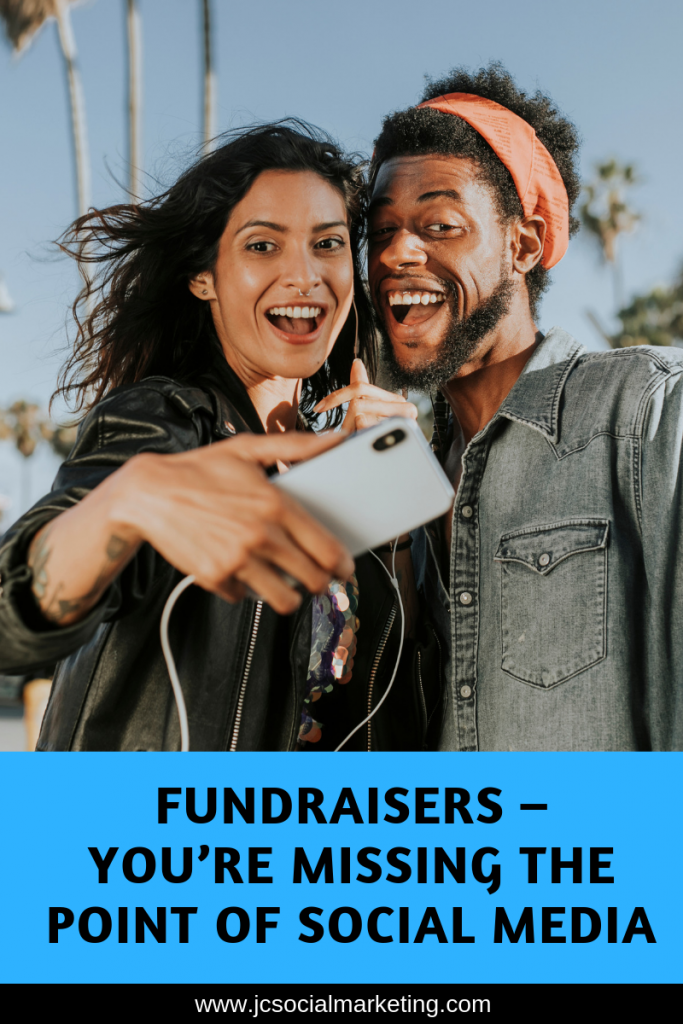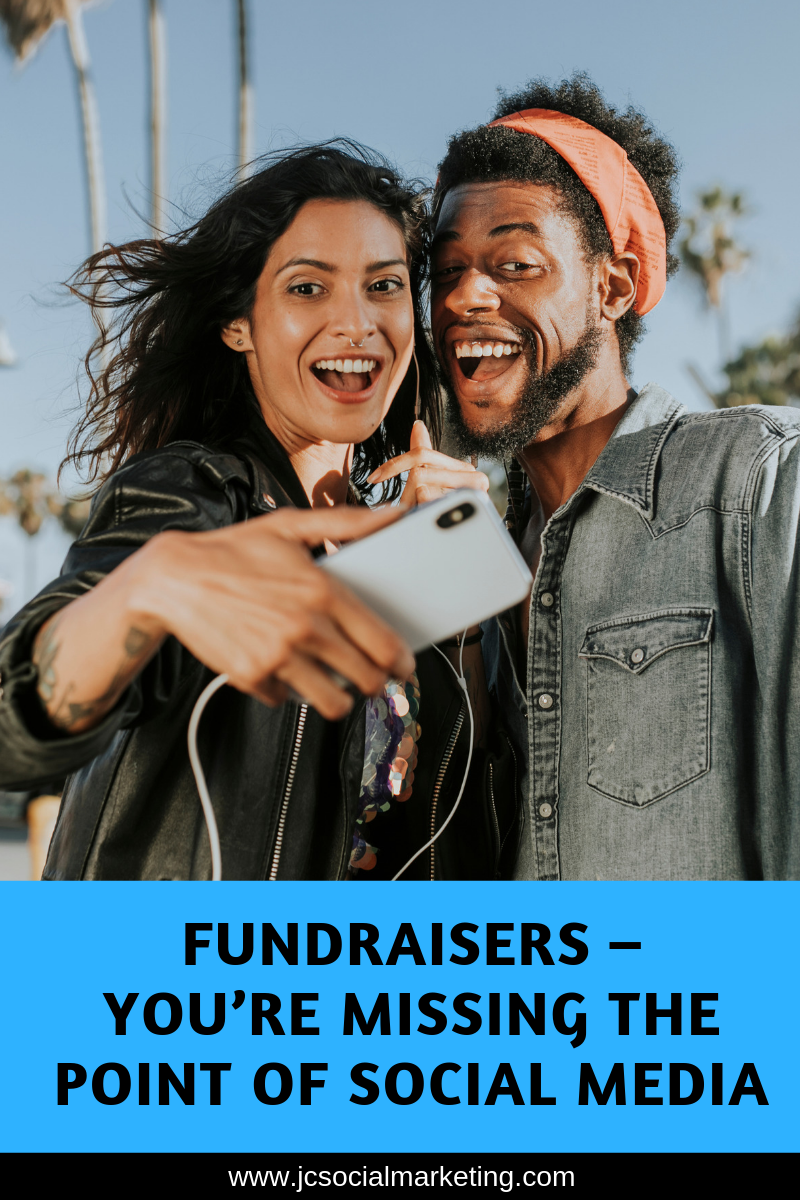 Lately I’ve been seeing a lot of articles, written by my fundraising heroes, that are a little bit grouchy on the subject of social media fundraising. I’m here to give you my side of the social media fundraising argument – because I know that it works.
Lately I’ve been seeing a lot of articles, written by my fundraising heroes, that are a little bit grouchy on the subject of social media fundraising. I’m here to give you my side of the social media fundraising argument – because I know that it works.
You may be saying, “Oh, sure, Julia, you have to stick up for social media. That’s your JOB.” (Insert eye roll and cross arms, maybe stamp foot for good measure.)
Well, there’s a reason that it’s my job. I made up my job. No one created a job description for me when I started out. I happen to believe firmly in the power of digital tools to build movements. You can’t build a movement without attention, participation, and investment.
Social media – when done STRATEGICALLY and CORRECTLY – is the perfect way to do all three of those things.
Beyond the possibilities for marketing and fundraising, social media represent a total revolution in the very way in which humans interact and communicate with each other. You can vilify them all you want – and you certainly would be justified in doing so in some cases – but these platforms have entirely changed how we discover, share, and discuss information.
It’s funny to look back and see that in 2012 A recent Associated Press-CNBC poll showed that half of all Americans thought that Facebook is a “passing fad”. 2 billion people later, no matter if you love it or hate it, I think we can all agree it’s here to stay, at least for the foreseeable future.
Social media are not simply hot tech trends, shiny objects, or advertising platforms. The individual channels may come and go and the tactics and techniques will change, but the vision of a world connected is here to stay.
The main points I have to make:
There are some serious myths out there about social media. It seems to me that some people still think of social media as a fad, or a trend, or a shiny new tool. Guess what? It’s not. The younger generations don’t even remember a world without social media. A world without posting, sharing, tweeting. You may recoil in horror, and you may pine for “the good old days” (sometimes I do too, trust me), but they are gone. Dead and gone.
Social media is not a thing. It’s a complete revolution in the way that humans communicate. It’s not going away, in fact, it’s just getting more and more baked into our online daily life.
And it’s not just the young’uns either – Pew Internet found that baby boomers are the fastest demographic joining social media networks. Forbes reported that 82% of boomers who use the internet have at least one social media account, and they have an average of 4.6 social media accounts, with Facebook and LinkedIn as the leading platforms.
This isn’t about you. Pamela Grow said in today’s Grow Report newsletter: “Julia, there’s nothing more important than your donor data. Honoring it. Protecting it. OWNING it. Instagram is now accepting donations for nonprofits. Yawn. I don’t care and neither should you.”
I strongly disagree with this point of view. You don’t own or control your donor data in the first place. They can unsubscribe, delete your emails, not listen to you, ignore you, etc. They can leave you at ANY time. If you are lucky enough to have their permission to email them or contact them, treasure it. If you don’t have their permission, they wouldn’t be a good long-term prospect anyway!
It’s like the old adage in Sex and the City – “He’s just not that into you.” It’s hard for fundraisers to hear, but if a donor does not want to give you their email address, you should respect that, shake it off, and move on to those that DO want to hear from you.
It’s pointless to argue. Sure, you can ignore Facebook Fundraisers, or the Instagram donation sticker, or YouTube Giving Tools. They are here to stay, and people love using them. Have you heard of Twitch livestream fundraising? Over $40 million was raised on Twitch for nonprofits in 2018, and over $100 million in total has been raised for charity since the site launched in 2011.
This is about normalizing giving, and making it a part of our daily life.
This isn’t about us, or our donors. This is about normalizing giving, even small gifts. If giving is seen as cool, and trendy, and something that everyone is doing, this is only beneficial to all nonprofits. If we see our friends and family fundraising and donating to causes that they care about, then we are much more liking to seek out causes and participate in philanthropy.
Articles saying that social media fundraising is worthless completely miss the point. Our donors are using social media, no matter how much we wish they were not. If they decide they want to give on those platforms, they will – no matter how much we wish they would give on another platform that we control. Ignoring or scoffing at social media fundraising is done at the fundraisers’ peril.
I’m happy to debate this further! What are your views on social media fundraising?

Comments 3
Pingback: Mixed Links for Nonprofit Communicators - March 8, 2019 - Kivi's Nonprofit Communications Blog
hi, great article! I agree with you that absolutely there’s a spot for social media and it’s part of your overall fundraising strategy.
HOWEVER, as you know I’m focused on monthly giving. When it comes to sustainers, it’s really important to have it go through your own giving site so you a. do know who these monthly donors are so you can recognize and cultivate them appropriately and b. you get all of the monthly gifts in the same process and you can track them and see if payments stop so you can take action right away.
Trust me, I work with organizations who have multiple systems and giving options and it’s an absolute bear to manage it all. Things fall through the cracks a lot and that’s the last thing you want to have happen with monthly gifts.
I know some crowdfunding providers organize fundraising campaigns asking donors to give monthly to a few projects they’re promoting and then the organization does not even know who these donors are, doesn’t know when they pay or don’t pay and worse, they’re not even able to communicate with the donors directly, That’s truly a big no-no in my book.
The typical donor doesn’t realize that the organization doesn’t know who they are because the social media or crowdfunding platform doesn’t pass on the info. So whenever donations and especially monthly gifts are involved, it’s crucial to have the gifts come directly to you so you know and you can build that relationship.
In other words, nobody is against social media, but what we’re not agreeing with is the fact that the organization doesn’t get the donors information so they don’t even have the chance to be able to build a relationship.
Donors think that the organization gets the info, so they’re upset if the organization doesn’t acknowledge their gift (be it online or through any other channel). How can you LOVE your donors, thank your donors if you don’t know who they are. That’s the one MAJOR downside of the current donation buttons. If they were to pass on the information, let’s go for it.
Until that happens, my recommendation is to always connect to your own giving page and forgo the donate buttons on social media.
Author
Thanks for the great insight, Erica! I do agree that in an ideal world, donors would give the way that nonprofits prefer them to give, and they would provide their contact information. However, as we know, they tend to do what they want, where they want it. We can certainly encourage them to give on our websites, but we have to create contingency plans for those who give on social media and prefer to do so that way.